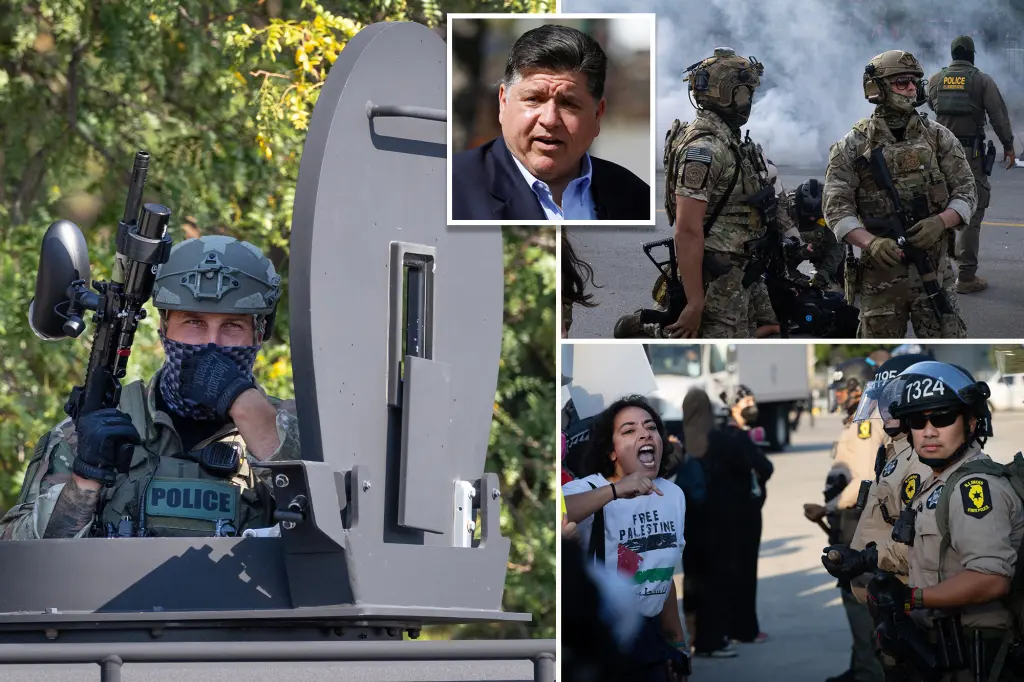Trump Deploys National Guard Amid Anti-ICE Protests
In a controversial move drawing sharp criticism from state officials, President Trump has ordered the deployment of 400 Texas National Guard troops to Illinois, Oregon, and other states experiencing ongoing anti-ICE protests. This decision comes as tensions escalate between federal immigration authorities and protesters across multiple American cities.
Illinois Governor JB Pritzker has strongly condemned the deployment, characterizing it as “Trump’s Invasion” and noting that federal officials made no attempt to coordinate or discuss the decision with state leadership. The Democratic governor urged Americans to “speak up and help stop this madness” while calling on Texas Governor Abbott to “immediately withdraw any support for this decision and refuse to coordinate.” Pritzker’s frustration stems from what he views as an unauthorized federal intrusion into state affairs, accusing Trump of using National Guard troops as “political props” by deploying them to a “sovereign state” without permission. The White House has not yet responded to requests for comment on these allegations.
The deployment decision comes amid escalating tensions in Chicago, where anti-ICE protests have intensified since the launch of “Operation Midway Blitz” last month. This federal initiative targets criminal immigrants who authorities claim have sought protection under Chicago’s sanctuary policies. The operation has faced significant opposition from local Democratic leaders, including Pritzker and Chicago Mayor Brandon Johnson. Despite their objections, the demonstrations have grown increasingly confrontational, with the Department of Homeland Security reporting that ICE agents in the Chicago area were targeted twice in vehicle attacks in a single day earlier this week.
The situation took a dramatic turn on Saturday when US Border Patrol agents patrolling Chicago’s South Side opened fire and wounded an armed woman after reportedly being attacked by protesters. The agents were approximately 15 miles from an ICE processing center in Broadview, a suburb that has become a focal point for demonstrations. The facility has seen more than a dozen arrests since Friday as protests continue. Similar scenes of unrest have been occurring in Portland, Oregon, where demonstrations outside an immigration detention center have continued for more than 100 consecutive days.
DHS Secretary Kristi Noem has heightened rhetoric around the situation, describing Chicago as a “war zone” during a Sunday interview. Noem also claimed that Chicago officials have been preventing federal law enforcement officers, including Border Patrol and ICE agents, from using public restrooms in the city. She personally experienced this restriction on Friday when she was allegedly denied entry to a government building in Broadview after requesting to use the restroom.
The deployment of National Guard troops to address immigration protests marks a significant escalation in federal response to local demonstrations. With state officials rejecting federal intervention and protesters showing no signs of backing down, tensions between federal immigration enforcement and local communities appear likely to intensify further. The situation highlights the growing divide between federal immigration policies and sanctuary jurisdictions, with cities and states increasingly caught in the middle of this contentious national debate. As demonstrations continue and federal presence increases, communities across the country are watching closely to see how this confrontation between federal authority and state sovereignty will unfold.


